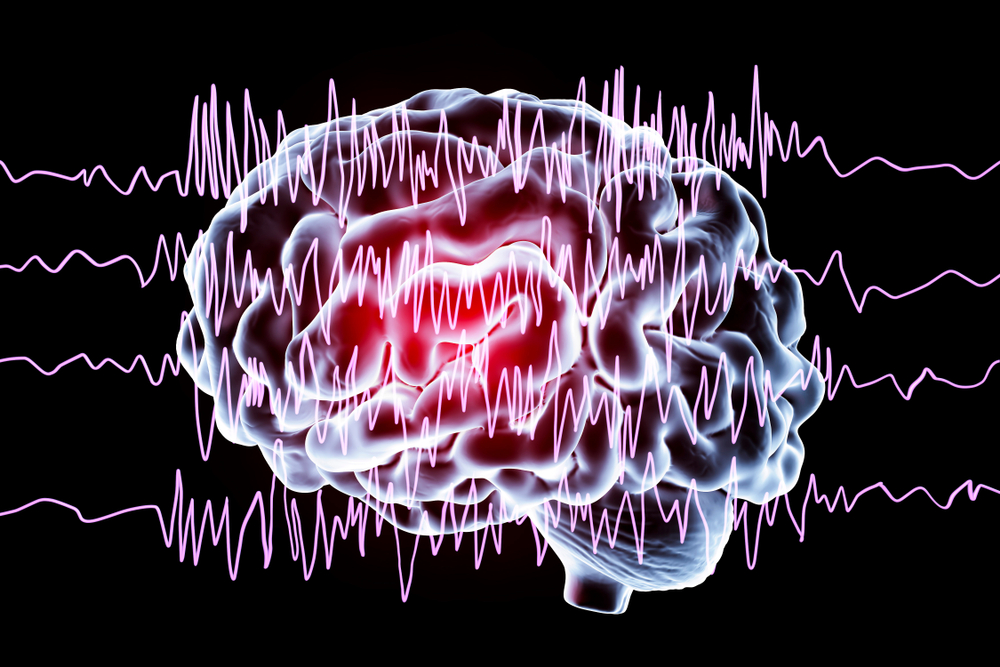Quick action guides treatment.
Takeaways:
- Status epilepticus is a seizure that last 5 minutes or more or repetitive seizures with no recovery between them.
- Status epilepticus is a medical emergency requiring prompt action.
- The maximum dose of lorazepam to treat status epilepticus should be determined based on lack of seizure activity and stable vital signs.
JANE,* a 16-year-old girl on the autism spectrum, is admitted to the medical-surgical floor directly from her provider’s office for complaints of headache and abdominal pain of unknown etiology, nausea, vomiting, diarrhea, and fever. Her parents have been giving her acetaminophen, which has decreased the fever. Jane has a history of convulsive seizures that are controlled with 500-mg levetiracetam twice a day. Her last dose was this morning, but she vomited an hour later. Her verbal communication is limited.
*Name is fictitious
History and assessment
Jane is admitted, and you take her vital signs: blood pressure (BP) 100/50 mmHg, heart rate (HR) 112 beats per minute, respirations 24 breaths per minute, temperature 98.9° F (37.22° C), and weight 55 kg. She’s alert and oriented, scared, quietly moaning, and rocking back in forth in the bed while holding her abdomen with her eyes closed. Jane’s skin is pale, she has dry, cracked lips, and her tongue is dry and pasty. Her sclera is pale yellow, and her abdomen is tender over the umbilicus with high-pitched bowel sounds in all four quadrants. Jane’s respirations are shallow, with short bursts.
You step out of the room to secure supplies, and as you’re walking back, you hear a commotion coming from Jane’s room. You find Jane having a tonic-clonic seizure; she’s nearly fallen out of the bed. With a coworker’s help, you gently move Jane to the floor, protecting her head and supporting her respirations using the head-tilt/chin-lift maneuver. You apply oxygen 3 L via nasal cannula and place a 20-G I.V. saline lock in the left antecubital vein. As staff members move furniture for safety, you activate the rapid response team (RRT), and the charge nurse pages the neurologist on call.
On the scene
As the RRT team gathers, you assess Jane. Her vital signs are BP 186/124 mmHg, HR 136 bpm, temperature 101.4° F (38.6° C), and oxygen saturation 92%. Her eyes are rolled back, face is deep red, teeth are clenched, and all muscles are tight and contracting. Jane is nonresponsive to verbal stimulation and sternal rub. You place oxygen via 100% nonrebreather mask, start 1,000-mL 0.9% normal saline wide open, apply electrocardiogram (ECG) monitoring, and place her on her left side.
The RRT obtains a 12-lead ECG, starts an 18-G I.V. in the right antecubital, and draws labs, including glucose, electrolytes, calcium, magnesium, complete blood cell count, liver function tests, toxicology, and arterial blood gases. Lorazepam 0.1 mg/kg (5.5 mg) is given at 2 mg/ min, and vital signs are obtained every minute. A second dose of lorazepam is given when the seizure continues after the first dose. The neurologist arrives and orders stat fosphenytoin 20 mg/kg at 50 mg/minute.
Jane had been seizing for 5 minutes when the RRT arrived; all outward manifestations of seizure activity subside 10 minutes after fosphenytoin is started. Jane is transferred to the intensive care unit (ICU), where her seizures are refractory and occur every 15 minutes. A continuous electroencephalogram monitor is placed; to support her respiratory status, she’s intubated and placed on a midazolam drip. The seizures are a consequence of missed doses of Jane’s antiepileptic drug (AED). When the medication reaches therapeutic levels, the seizures cease.
Education
The International League Against Epilepsy defines status epilepticus as a seizure that lasts 5 minutes or more or repetitive seizures with no recovery between them. Typically, the cause of continuous seizure activity is non-adherence to the medication regimen and/or fever. ICU care should include additional testing to determine other potential causes, including infection, elevated blood glucose, illicit drug use, or nontherapeutic AED levels. Treating the underlying cause should guide the most efficacious medical treatment.
When Jane is discharged, you talk to her and her parents about potential seizure triggers including stress, lack of sleep, menses, illegal drugs and alcohol, missing AED doses, bright lights, loud music, and infection. You explain that if a convulsive seizure occurs outside of the hospital setting, they should protect Jane’s airway and call for emergency medical assistance.
Donna J. Purviance is an assistant professor of advanced practice nursing at Indiana State University in Terre Haute.
Select References
Brophy GM, Bell R, Claassen J, Alldredge B, Bleck TP, Glauser T, et al. Guidelines for the evaluation and management of status epilepticus. Neurocrit Care. 2012;17(1):3-23.
Glauser T, Shinnar S, Gloss D, Alldredge B, Arya R, Bainbridge J, et al. Evidence-based guideline: Treatment of convulsive status epilepticus in children and adults: Report of the guideline committee of the American Epilepsy Society. Epilepsy Curr. 2016;16(1):48-61.
Sculier C, Gaínza-Lein M, Sánchez Fernández I, Loddenkemper T. Long-term outcomes of status epilepticus: A critical assessment. Epilepsia. 2018;59(suppl 2):155-69.
Trinka E, Cock H, Hesdorffer D, Rossetti AO, Scheffer IE, Shinnar S, et al. A definition and classification of status epilepticus—Report of the ILAE Task Force on Classification of Status Epilepticus. Epilepsia. 2015;56(10), 1515-23.


















